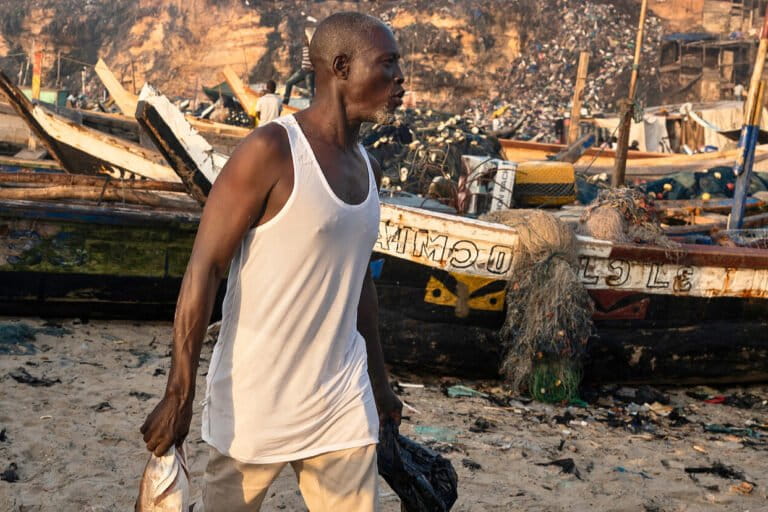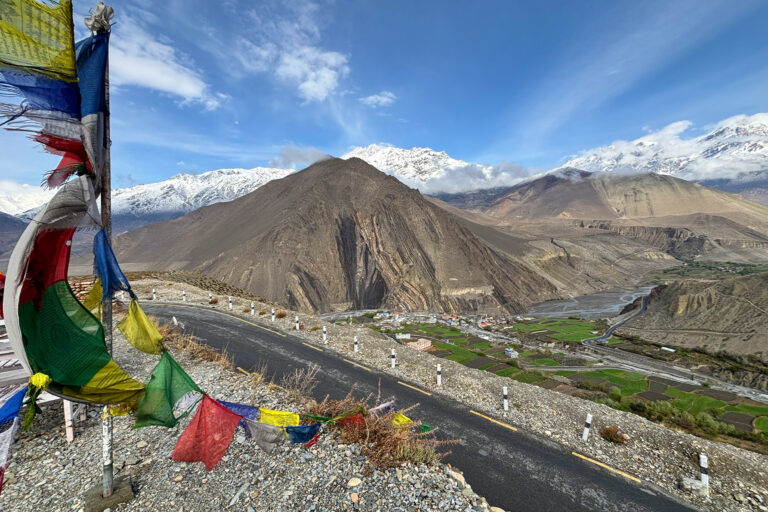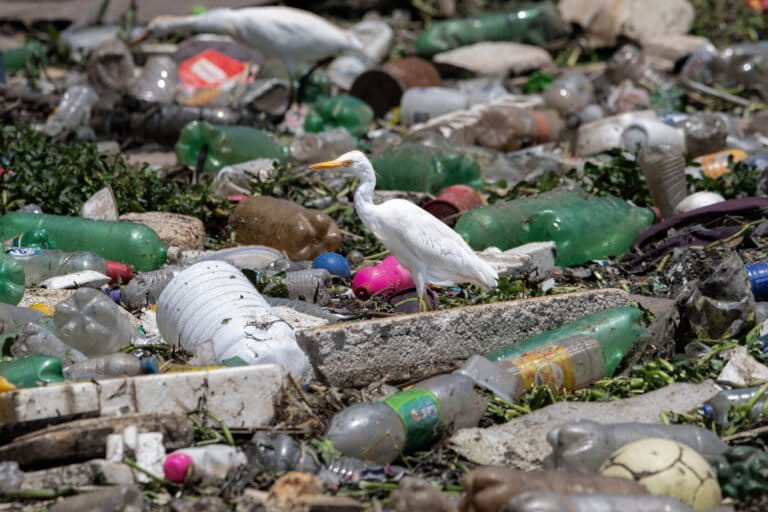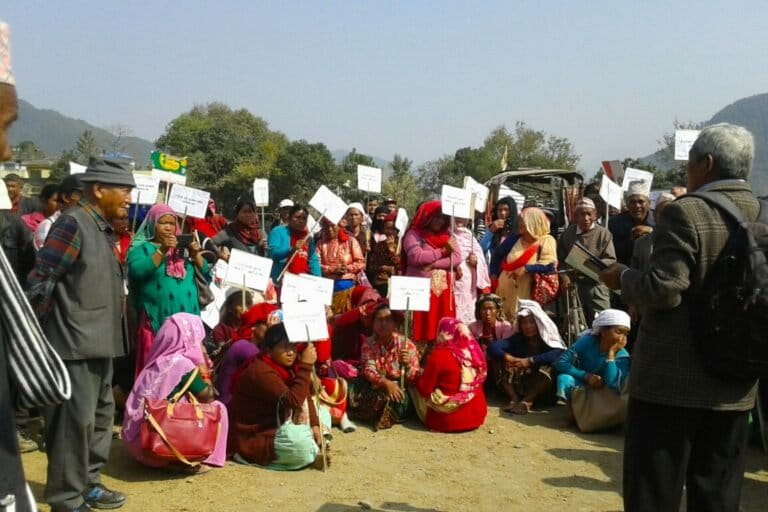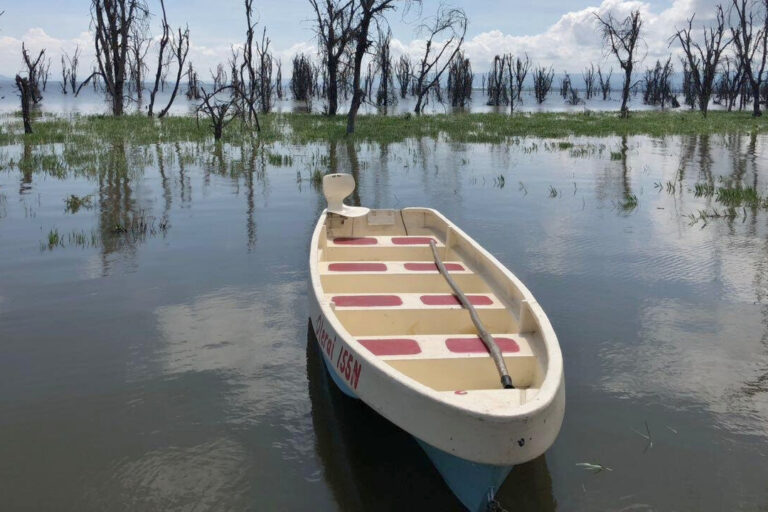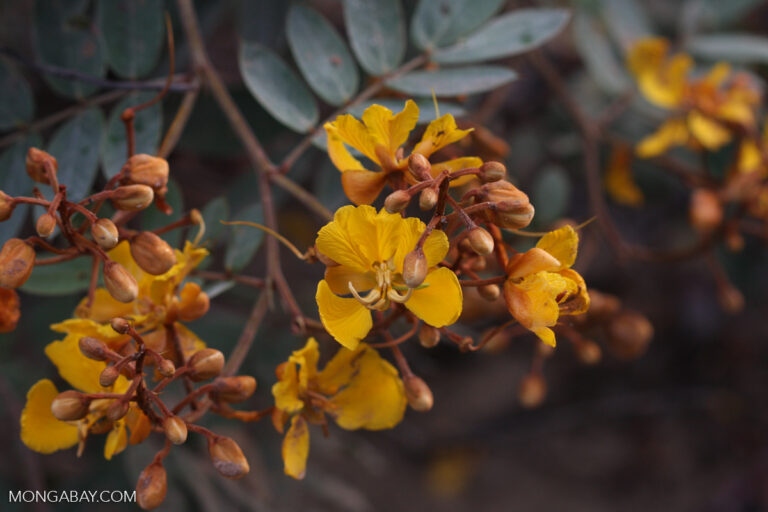- The Indigenous Kogi of the Sierra Nevada of Santa Marta in northern Colombia have been saying for decades that non-Indigenous populations are destroying the Earth, but now they want to share their knowledge about how to save it.
- Today, they are part of the very first UNESCO BRIDGES project, which focuses on finding solutions coming from communities, rather than experts bringing their idea of solutions into communities, which has long been problematic.
- The new project, called Reviving Water: Munekan Masha (“let emerge or be born”), will be led by the Kogi, teaching scientists and education experts from various universities about their conservation methods.
- Both the Kogi and non-Indigenous experts will also help develop Indigenous conservation methods for school curricula, to help Western science broaden its outlook, experts say.
Long before climate change had been deemed a global crisis, the Kogi Indigenous people, who have long lived in seclusion in Colombia’s Sierra Nevada mountains, were already warning that industrial societies were destroying the Earth and needed to change their ways.
In 1990, the Kogi invited British filmmaker Alan Ereira into their community – a rare occurrence at the time – to film their message to their world. They showed him the melting glaciers and drying paramo, the Andean alpine tundra around them, saying it reflected the suffering of the earth. If the rest of the world didn’t change their exploitative ways and listen to the Kogi, the planet would suffer, they said in the resulting BBC documentary.
Today, the Kogi maintain that they have the knowledge to save the Earth and have invited a group of scientists to work with them and show them what that is.
In a new project, called Reviving Water: Munekan Masha — meaning “let emerge or be born” — the Kogi will work with non-Indigenous scientists to restore three areas of degraded land in the Sierra Nevada of Santa Marta, focusing on water sources. But the crux of the project, say its organizers, is their intention to create education material to teach the Kogi conservation method in western schools, universities and elsewhere.
The Kogi community will both lead and be the main decision-makers of the project, showing scientists from the University of Zurich their conservation methods and process. Anthropologists and education experts, as well as their Kogi counterparts, will also accompany the process, to better bridge the knowledge gap between the two groups, with the Western scientists aiming to understand the Kogi methods and develop teaching material for schools, universities and elsewhere. The goal is that others will one day be able to apply Kogi methods to restore other pieces of land.

“We’re now in a position where 80% of all species on Earth only exist in Indigenous territory, which tells you something about the difference between the way in which they look after land and the way we look after the land,” said Ereira, the filmmaker and founder of the Tairona Heritage Trust, who has known the Kogi for more than 30 years.
“If we don’t start to learn from them, then we’re doomed, which [the Kogi] are conscious of, of course, and what they’ve been saying the whole time they’ve known me,” Ereira told Mongabay.
The project, conceived by the Kogi together with the Tairona Heritage Trust, is the first to be supported by UNESCO BRIDGES, an initiative created after the U.N. education agency realized there was a lack of grassroots conservation knowledge in the sustainability development goals it was trying to promote. As a result, solutions remained top-down, controlled by the same conventional experts. This has led to many problems over the years, like solutions projects being imposed on communities without their consent, or even projects failing once those same experts left. BRIDGES was created to focus on solutions coming from communities themselves, said anthropologist Luci Attala, director of the UNESCO BRIDGES Hub at the University of Wales Trinity Saint David (UWTSD) who is also part of the Munekan Masha project.
“People find it quite difficult to understand because they’re so used to imagining that the Kogi must need something that we can give them,” Attala told Mongabay via videocall from her home in Wales.
“But this is an academic project. This is now the Kogi as academics, the Kogi as experts,” Attala said.
‘To listen is to think’
The Kogi are one of four Indigenous nations who live in the Sierra Nevada, along with the Arhuaco, the Wiwa and the Kankuamo. All four are descendants of the Tairona people, who fled into the mountains to avoid slaughter and slavery when the first Spanish colonizers arrived in the 16th century. Today, they continue to live in seclusion in the mountains, having largely maintained their traditional lifestyles.
Living for centuries as small-scale farmers, the Kogi are highly attuned to nature. Their communities are largely guided by spiritual leaders known as the Mamas, and their female equivalent, Sagas, who are often trained for this role from birth. This includes being raised in complete darkness for their first 18 years of life, as they learn to listen to the land and how to respond to it, Ereira said.
“The Mamas themselves have a very important motto: To listen is to think… thinking is what creates the world,” he said.
This process of connecting and listening to the land, which the Mamas are trained to do, is how they make all their decisions. These decisions don’t come from themselves; they come from the earth in various ways, Ereira said.

This is how the Kogi have been able to restore other areas within their territory over the years. The most notable is the Guachaca River Valley, which had been converted to various drug plantations and then pasture for cattle. The Kogi were able to restore the forest and recover the river’s fast-flowing water again.
“The Kogi and Wiwa took it over and began regrowing the forest in the way that I’m talking about, by listening to it [the land], following its instructions,” said Ereira, who saw the area and documented it in his 2012 film. Unfortunately, he added, the process was never measured or monitored by Western scientific standards.
It’s important to remember, Ereira said, that their conservation process isn’t a rewilding of the landscape or letting it regenerate on its own, which are popular conservation methods today. Rather, they garden the landscape in harmony with the needs of the land itself, he said.
Biologist Jeferson Villalba Fuentes, president of the Atelopus Foundation, a scientific NGO based in Santa Marta, is not part of the Munekan Masha project, but has long worked with the neighboring Arhuaco community and has seen how their connection and communication with the land, similar to the Kogi’s, has helped sustain healthy ecosystems, which scientists can learn from, he said. The Foundation has been working with the Arhuaco for over five years to protect the rare harlequin toad (Atelopus laetissimus), a species with healthy populations in the Arhuaco territory although nearly extinct in its other native areas.
“We believe that they have really managed the land and their territory in an efficient way. This has helped us to understand conservation from another point of view, not only from the scientific point of view that we’re taught in the universities, but also we have been able to understand nature and the land itself as another living being,” Villalba Fuentes told Mongabay via conference call, with his colleague and vice-president of the Atelopus Foundation, José Luis Pérez González.
The Atelopus Foundation has worked with the Arhuaco community to help document their knowledge, which has resulted for instance in a book of medicinal plants from the region. But they haven’t embarked on a larger cross-cultural education initiative like the Munekan Masha project.
“In the world we are living in today, I think it is a very interesting proposal,” Pérez González told Mongabay about Munekan Masha. Indigenous knowledge shouldn’t conflict with western science, he says, adding that including it in western institutions as another conservation option could make the science itself stronger. However, interpreting the Indigenous knowledge and methods could be a challenge, he says.
So far, the Kogi have been secretive about their conservation methods, not trusting outsiders with their knowledge, Attala said. Sometimes their actions appear to be spiritual, like giving offerings to the mountain, “but what I’m interested in is the activities, what they physically do to a piece of ground, because they do physically do things,” she said.
In December, UNESCO recognized the ancestral knowledge system of the Kogi and the three other Indigenous peoples of the Sierra Nevada of Santa Marta, and declared it an intangible cultural asset. This is an important nomination, says Pérez González, “it recognizes that this knowledge must be remembered over time and be made known” to a broader public, he says.
Kogi Indigenous science
The Sierra Nevada of Santa Marta, where the Kogi live, stretches along Colombia’s northern Caribbean coast. The mountains here rise to 5,775 meters (18,947 feet), just 42 kilometers (26 miles) from the shoreline. That makes it the planet’s highest coastal mountain range. It’s also considered one of the most important sites in the world for threatened species, according to a IUCN 2013 study.
But the region is also vulnerable to a wide range of threats. The Kogi have watched over the years as surrounding glaciers have diminished and riverbeds have dried up, an impact of climate change. Expanding mining operations, agriculture, tourism, and water management systems for nearby towns and cities that have rerouted streams have also put extra pressure on local ecosystems. Guerrilla and paramilitary groups have also long operated in the mountains, at times threatening local communities and putting extra stress on traditional lifestyles in the forest, Ereira said.
The Munekan Masha project will focus on three areas that have been degraded over the years, mostly by cattle ranching and former drug plantations, and will last three years, at least initially. But this will likely be extended, as restoration is a long-term process, project organizers told Mongabay.
The Kogi Mamas have already identified the three sites, after listening to the land and identifying what areas wanted to be regenerated, Ereira said. When the environmental scientists visited the community for the first time in July, the Mamas and the land officially approved their participation in the project.
“What we are also doing in this project is giving them their voice, now they can show us how is it that they have been doing it, not just for decades, but for centuries,” said Ingrid Olivares, an ecologist at the University of Zurich who will be collecting all ethnoecological data with the Kogi. “How is it that they have been taking care of land?”
Olivares told Mongabay that they haven’t spoken with the Kogi in detail about the conservation process, but she’s eager to learn more. After their first visit to the community, several parallels between the Kogi knowledge system and Western science were already apparent, she said. For example, the areas the Kogi identified for restoration seemed to follow a scientific logic, says Olivares. The sites are on the most humid side of the mountain, which will help with plant regeneration, and close enough to preserved forests, which could serve as nurseries, while birds and other animals could naturally spread seeds into the land they’re restoring.

“The way in which they selected the areas … it was like, this is how I would have done it. And this is the logic that I would have applied,” Olivares said.
Olivares, originally from Bogotá, Colombia’s capital, said she expects other similarities will come up between the Kogi and the non-Indigenous view of ecology.
She also said they’ll likely find faster and more practical restoration methods by working with the Kogi, as restoration science can be costly and very time-consuming. Restoration projects, as taught in academia, usually involve needing to properly evaluate the degraded site, identify a similar ecosystem that hasn’t been degraded, and find ways to bring those conditions to the degraded area. Typical methods can include growing plants in greenhouses before transferring them to the degraded site, or actually removing any contaminated soil and replacing it altogether, Olivares said.
“But if the local Indigenous communities are the ones interested in doing this, then many of these factors are already accounted for,” she said. “This is a much more organic way of doing it, because they are the ones that have lived in this ecosystem, they already know it, and they know how it works and how can they improve it.”
Inclusive conservation science?
For Attala, one of the most important parts of this project isn’t just restoring the land itself, but the educational material that will come out of this experience of learning from the Kogi.
This is no small task, she said, as it needs to account for the cultural, knowledge and language barriers between the two parties. To ensure the best accuracy for this cross-cultural understanding, both the Kogi experts and the non-Indigenous scientists will each create their own baseline studies for the restoration process. At the end of this process, the scientists and Mamas will sit down to talk about what findings were important or culturally significant for each party. The entire restoration process will also be followed by anthropologists and education experts, as well as their Kogi counterparts, and aided by a cultural translator.
The final product will be an activity model, revised by the Kogi Mamas, that explains the Kogi restoration methods and that can be disseminated at schools and universities, or maybe even online for anyone to access. Attala said this will help “decolonize the curricula” around the world to help Western science broaden its outlook to include different types of knowledge, “because there’s a bit of a stranglehold on knowledge at the moment in terms of the hard sciences,” she added.
“We scientists have to leave the arrogance of knowledge aside,” says Villalba Fuentes. “There are many of us who think that because we have a master’s degree or a doctorate we know much more than people who have not acquired a formal education in life. So we are always willing to learn from the communities we visit, and we have always been very surprised by what they have been able to teach us.”
So far, Attala says, the Munekan Masha project has managed to purchase one of the three pieces of land they hope to work on from local farmers, and are still looking for funds to pay the European experts to travel to the area and to purchase the other two pieces of land. She said they hope to begin the project in the first conservation area in early 2023.
Banner image: Kogi men gathering at one of the sacred sites located in Kuizhimakke (Mingueo, Colombia). Sacred sites encapsulate the knowledge on a particular quality of the territory, its peoples and on its tangible and intangible resources available. Image courtesy of The Tairona Heritage Trust.
FEEDBACK: Use this form to send a message to the author of this post. If you want to post a public comment, you can do that at the bottom of the page.







